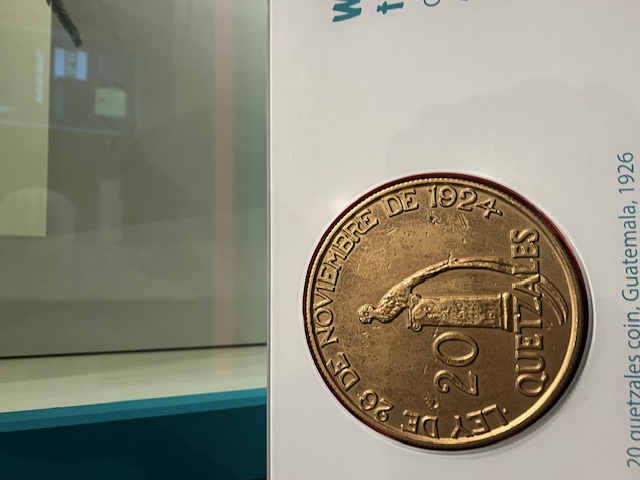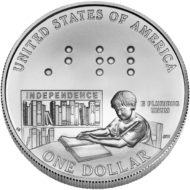Recently I learned that the Smithsonian has a new accessible exhibit, called Really BIG Money. And you know me, I just need to check things like that, so I used the excuse that flying home from Cincinnati there was no direct flight and I had to switch flights in Washington DC. Layovers are where good things happen.
I contacted Jennifer Gloede, who put me in touch with Ellen Feingold, who set up a meeting with me, and was very kind to work with my schedule so I could visit the exhibit on my way home.
When we met at the Smithsonian, Julia Garcia and Shira Goldstein also joined us, who were also instrumental in putting the exhibit together.
The target age group of the program is third to fifth grade children. From the beginning I felt that they very professionally met the needs of this age group. Objects, pictures and any interaction were placed lower, text was short and easy to read, and in general the entire place felt a little breezy, just not too overwhelming. As I always say, what’s necessary for some people, can benefit others. In this case, such an approach definitely makes interaction easier for children with cognitive disabilities, while creating a more digestible experience for all kids.
What was dense, though not overwhelming, is the information they managed to communicate with so few objects. Instead of showing a lot, they managed to create selection in a way that any individual object communicates many things at the same time allowing greater learning and conversation.
On one side, there are four monetary objects:
-
A 20 Quetzales from Guatemala
-
A Swedish plate money
-
A picture of a head made of 165 Roman coins
-
A stone that is used to make Yap money.
Each object can be touched, and there is information about it that students can read.
But here is the genius approach to how they squeezed so much information into it.

Let’s take the Quetzal for example. It is not just a coin, there is so much to talk about in connection to it. For example on the enlarged tactile coin one can easily feel the feather of the Quetzal bird. One can discuss what and why countries put on coins, how the money of Guatemala was named after a bird, how the feathers of the quetzal was used for trading, etc. Also notice that each object is from a different continent.
What I also liked about the exhibit is its global approach. While most likely the majority of the students visiting will be from the United States, they an learn about the entire world, and put into perspective what they can learn. For example when they display inflated banknotes, even the number of zeros would wow a student at this age, but they go further and explain that in 1923 a wheelbarrow of money could buy a loaf of bread. And then before you think that ok, it’s just history, next they go to Venezuela and show that the same thing can happen right now, in our lifetime. I jokingly mentioned that I miss the example from Hungary where they had the highest ever inflation in 1946. But for all practical purposes, I think it made more sense to compare Germany and Venezuela to cover a larger time span and give more tangible examples.
After learning about inflation and tool money, students can put to the test what they learned in a game. And here comes the big surprise. One can plugin a headset, and play the game using a screen reader.
Because what should education be? Fun and play. And while students can participate in the learning, as a blind child I would probably feel neglected if I couldn’t participate in the play part. But here it is not the case. And at the very end, children can take a picture of themselves and place it on a Dollar bill. I have seen this idea in many museums, and I have to say, it is a big deal for kids. Even for me, I stood in line for some of those.
It is unbelievable how much education and play the team managed to squeeze into a 250 square foot room without being overwhelming.
I remember when I was in about fourth grade, I hated museums with a passion. For me there was nothing to do, nothing to touch, and I felt I was wasting my time while the rest of the kids were having fun. It wasn’t only boring, but it was humiliating in so many ways. It is really a dream come true for me that it doesn’t have to be the case, and kids with disabilities will be able to approach museums with a different mindset and love them just like anybody else.
If you are a teacher, I would highly recommend that you take your class to see this exhibit. If you are building exhibits, it is also a must see to learn from.
For those of you who are not able to travel to DC, similar accessible content, including the game is available online.
I would like to thank Ellen and the entire staff for allow me to view this exhibit, but most importantly for putting so much thought into accessibility.
